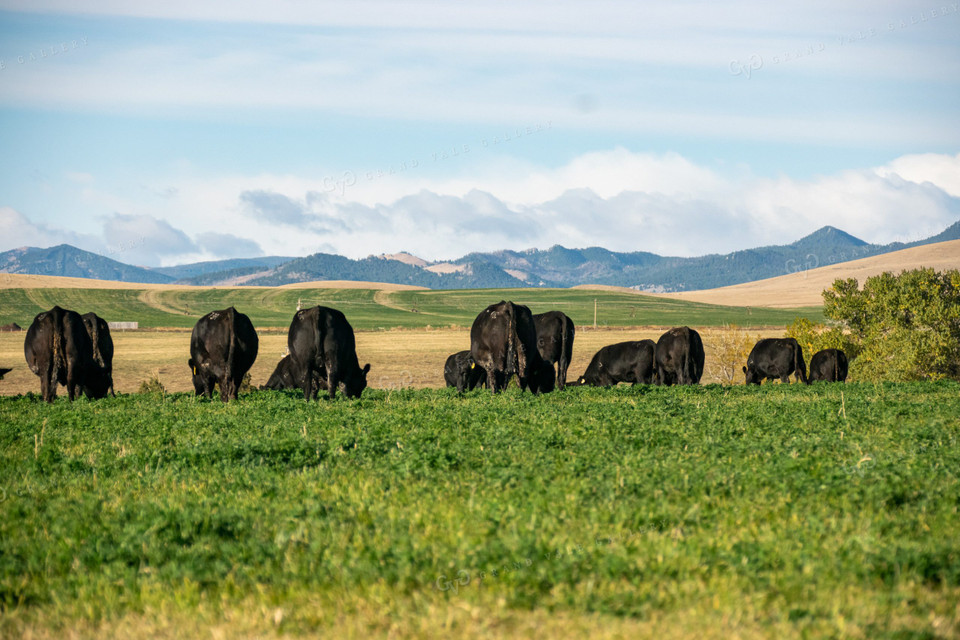
Springtime Bloat in Cattle: What You Need to Know and How Micro-Aid® Can Help
By Justin Clopton, Account Leader, DPI GLOBAL
Spring is a time of renewal, green pastures, and fresh forage for grazing cattle. But with those lush fields comes an increased risk of bloat—a condition that can escalate quickly and become a major issue for producers. If you’ve ever dealt with it, you know how fast things can go south.
The good news? There are ways to stay ahead of the problem and reduce the risk, including smart pasture management and strategic nutrition. That’s where Micro-Aid comes in as a natural, effective solution.
Why Is Bloat More Common in the Spring?
Bloat happens when gas builds up in a cow’s rumen and can’t escape. The most common type, frothy bloat, occurs when cattle graze on rapidly growing pastures rich in legumes like clover or alfalfa. These plants produce a foamy layer that traps gas in the rumen, making it impossible for the animal to release it naturally.
Spring is prime time for bloat because:
- Young, fast-growing plants are high in soluble proteins, increasing foam formation.
- Wetter conditions—morning dew, rain, or even frost—can alter plant structure, making them more likely to cause bloat.
- Cattle gorge on fresh pasture, especially if they’re hungry when turned out.
Signs of Bloat to Watch For
Cattle producers know their animals best, so spotting early signs of bloat is key. Keep an eye out for:
- Swelling on the left side of the abdomen (just behind the ribs).
- Cattle acting uncomfortable—kicking at their belly or looking restless.
- Heavy breathing or excessive drooling.
- In severe cases, cattle may collapse suddenly.
- If you see these signs, acting fast can make all the difference.
Preventing Bloat: Practical Tips
- Ease cattle onto lush pastures. If they’re transitioning from dry feed, introduce them to new forage gradually.
- Feed hay first. Giving cattle dry hay before turning them out reduces their urge to overeat fresh, bloat-prone forage.
- Manage pasture composition. A mix of grasses and legumes helps balance the diet and reduce risk.
- Consider natural solutions like Micro-Aid®.
How Micro-Aid® Can Help
Micro-Aid, a natural feed additive from DPI GLOBAL, is derived from Yucca schidigera and has been trusted by producers for decades to support rumen health and overall herd performance.
Here’s how it can play a role in reducing the risk of springtime bloat:
- Helps Reduce Ammonia & Gas Build-Up
- Micro-Aid supports a healthier gut environment, helping cattle better handle high-risk diets by reducing excess gas and improving fermentation balance.
- Shifts Fermentation Toward Efficiency
- Micro-Aid has been shown to influence the fermentation process in a way that directs nutrients toward more efficient outcomes—like microbial protein production—and away from less efficient processes, such as methane production. This shift can help mitigate the conditions that contribute to bloat.
- A balanced rumen supports better digestion and fewer digestive disruptions—both key to keeping animals healthy during seasonal transitions.
- Micro-Aid continues to be a reliable, research-backed solution that producers can count on when performance and animal health are on the line.
Stay Ahead of Spring Bloat
Springtime grazing is one of the best parts of the year, but it does come with challenges. By making smart management decisions and using trusted feed additives like Micro-Aid®, producers can keep cattle thriving and minimize risk.
Want to learn more about how Micro-Aid can help this spring? Contact jclopton@dpiglobal.com for more information.
Meet the Author: Justin Clopton
Account Leader, DPI GLOBAL
Justin Clopton is an Account Leader at DPI GLOBAL, with nearly a decade of experience specializing in the poultry and ruminant sectors. He manages territories in Australia, Mexico, and the United States, focusing on delivering practical, science-based solutions that benefit both animals and producers. In addition to his account leadership responsibilities, Justin leads DPI Global’s poultry strategy efforts, driving growth and advancing solutions tailored to the unique needs of the poultry industry.
When he’s not working with clients, Justin enjoys spending time with his family, raising cattle, and finding new ways to contribute to the agricultural community.

